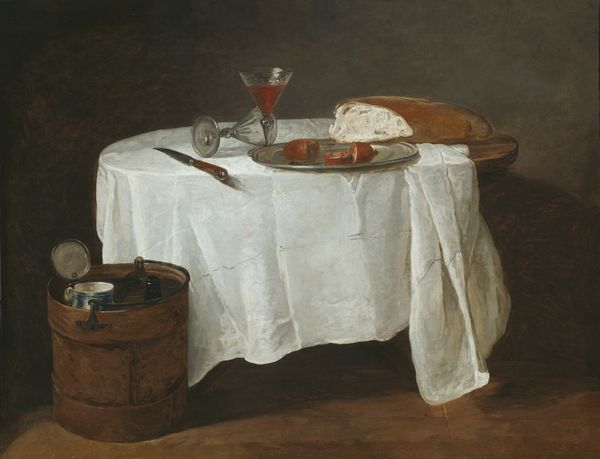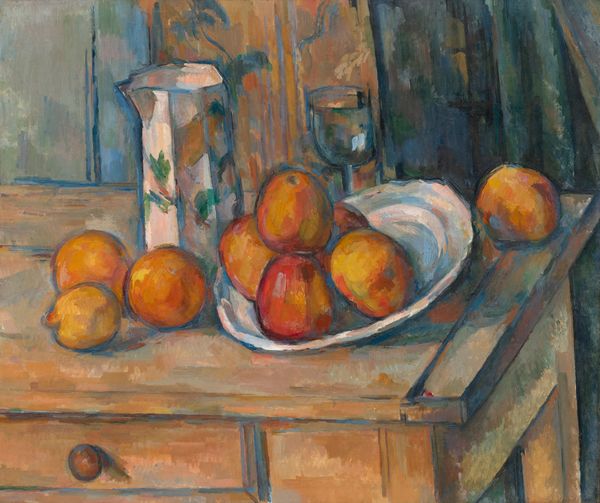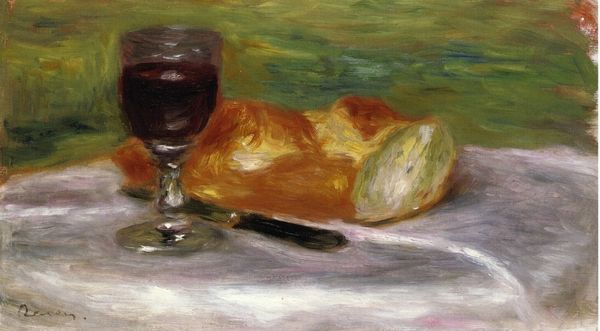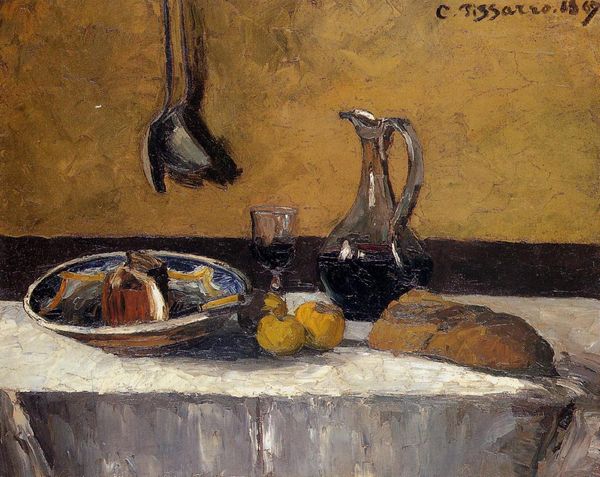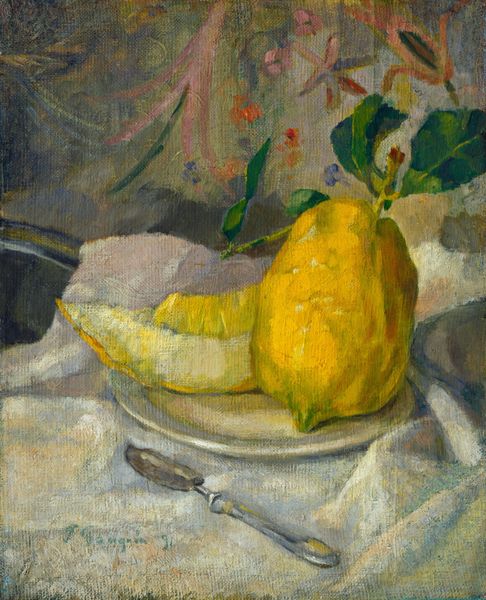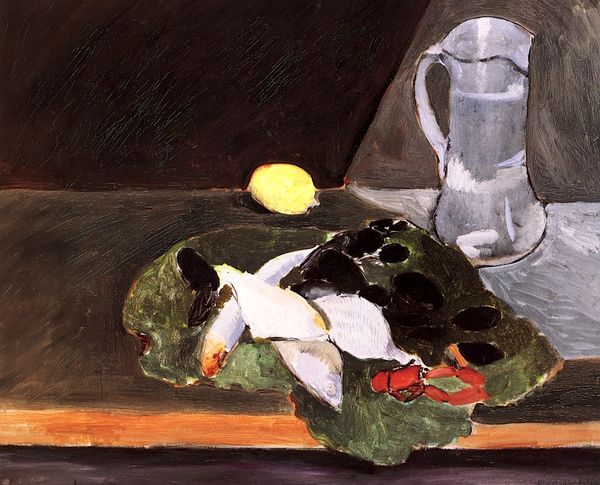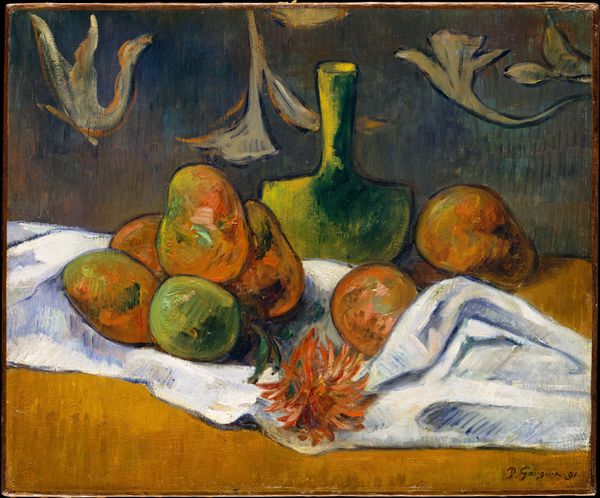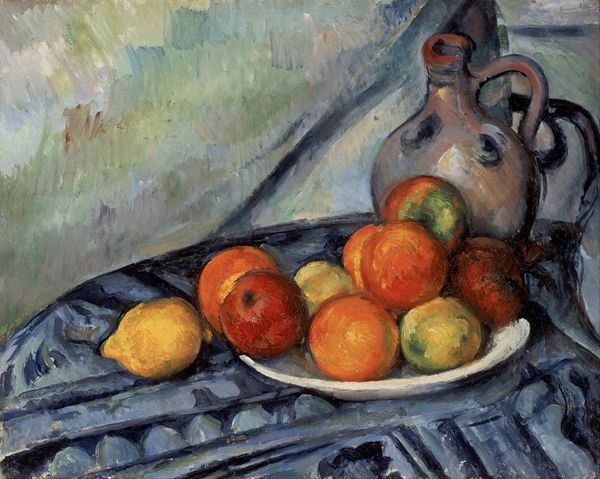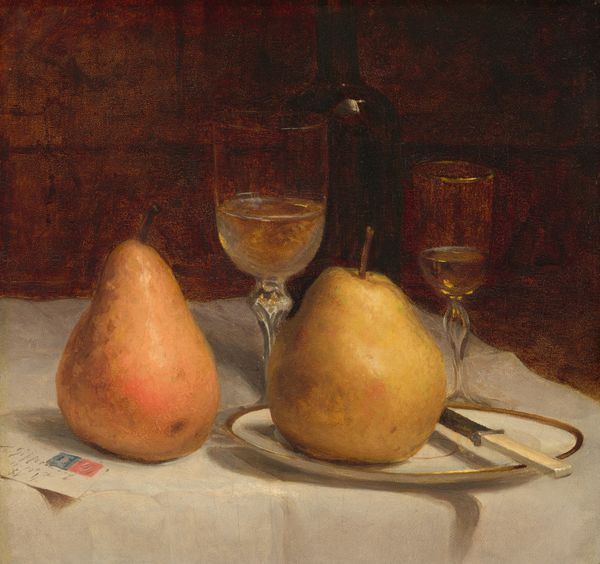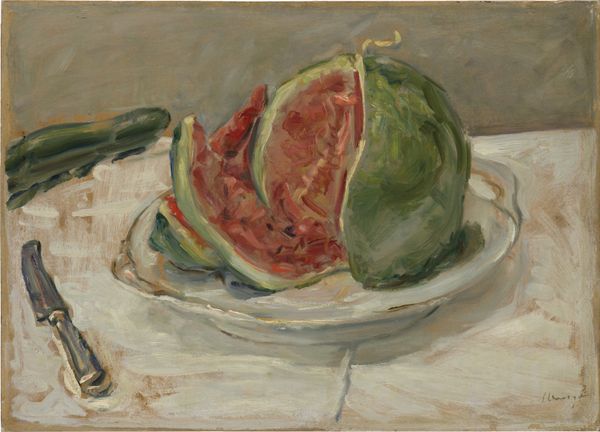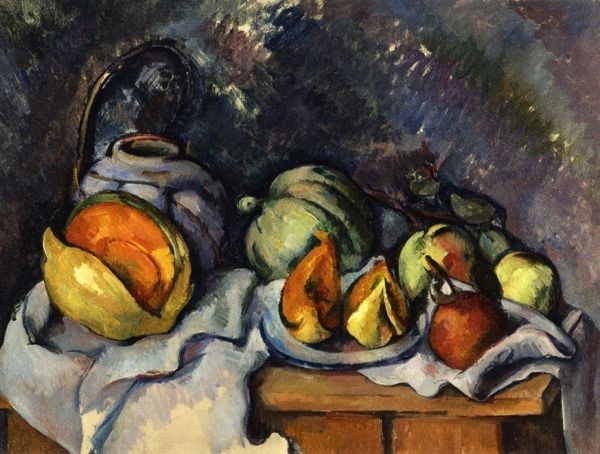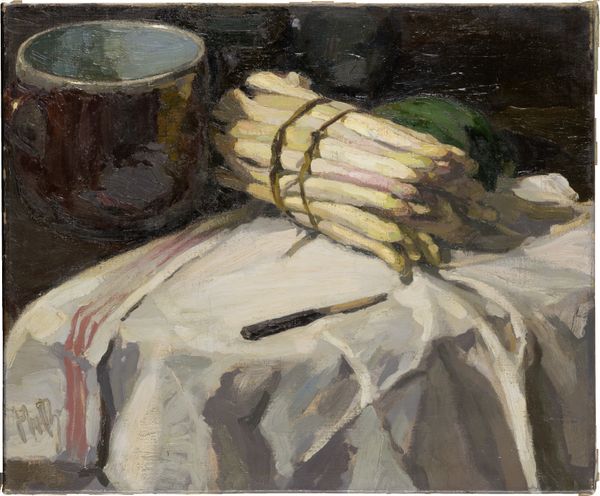
Dimensions: overall: 26.04 × 40.01 cm (10 1/4 × 15 3/4 in.) framed: 33.81 × 47.31 × 3.49 cm (13 5/16 × 18 5/8 × 1 3/8 in.)
Copyright: National Gallery of Art: CC0 1.0
Curator: Here we have Henri Fantin-Latour’s “Still Life with Mustard Pot,” painted around 1860. Editor: It strikes me as wonderfully austere. The objects are carefully arranged but the overall effect feels unstudied, almost like a fleeting observation. There is a sense of quiet and isolation that I find particularly compelling. Curator: Indeed. Though seemingly simple, these commonplace objects resonate with layers of cultural meaning. The mustard pot, for example, suggests the rituals of dining and domestic life in 19th century France, implying a certain level of bourgeois comfort and order. Editor: I’m more captivated by the compositional choices. Notice how Fantin-Latour has used a restricted palette – primarily whites, blacks, and yellows. This, combined with the impasto technique, creates a visual texture that draws you in. Curator: The impasto does lend the painting a tactile quality, making the mundane almost monumental. We must remember that in this period, the still life was considered a lower genre than history painting or portraiture, yet artists like Fantin-Latour invested it with their own unique vision. There’s an intimacy to these small, carefully chosen objects. They feel personally significant. Editor: I agree. Look at how the stark contrast between the black handle of the knife and the luminous yellow of the mustard-covered spoon creates a point of focus. The off-center arrangement gives the image a contemporary edge. It is far removed from traditional academic compositions. Curator: Certainly. The painting rejects idealization in favor of a more honest representation of reality. And even within that realism, the objects serve as symbols, each laden with implications about class, consumption, and domesticity. The painting offers a glimpse into a very specific world, with its own rituals and values. Editor: For me, it's a demonstration of how line, color, and texture combine to generate meaning. Fantin-Latour uses a very simple arrangement, but the final artwork delivers a complex and fascinating impact. Curator: Precisely. The longer one looks, the more apparent the subtlety becomes. These seemingly simple objects open a portal into understanding nineteenth-century sensibilities. Editor: I’ll never look at a mustard pot the same way.
Comments
No comments
Be the first to comment and join the conversation on the ultimate creative platform.


